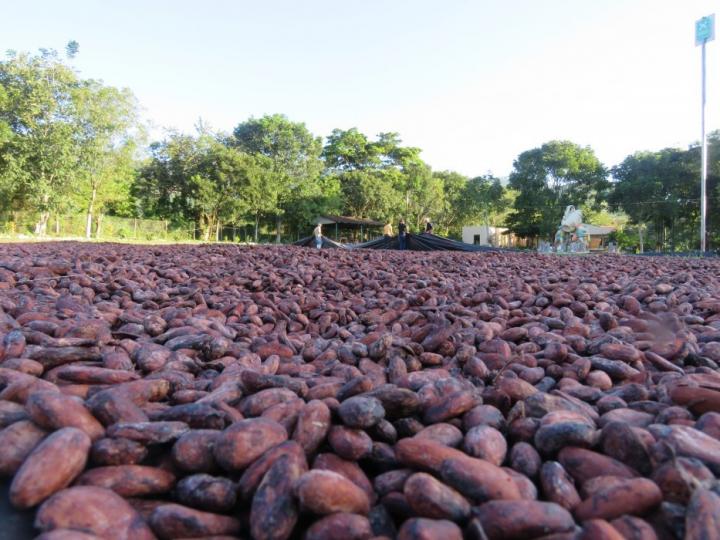Smithsonian conservation research brief
Did you know chocolate comes from cocoa beans grown in some of the most biodiverse tropical landscapes on the planet? The cocoa tree (Theobroma cacao) is farmed within biodiversity hotspots of West Africa, South America, and Southeast Asia. Cocoa was traditionally grown under a canopy of native trees that provided habitat for birds and other wildlife. However, pressure to increase cocoa production has pushed many farmers to clear forest and eliminate the shade trees on their farms.
An estimated 2-3 million hectares of tropical forest were converted to cocoa from 1988-2008 with severe consequences for biodiversity. Unsustainable cocoa monocultures (agricultural systems growing a single crop type) eventually collapse from disease, pests and soil degradation, hurting local communities as well as bird populations. Eliminating monoculture cocoa from supply chains and converting to sustainable agroforestry systems can help maintain productive farms while protecting habitats and biodiversity.
RESEARCH PAPER
Title: “Impact of cocoa agricultural intensification on bird diversity and community composition”
Published: Conservation Biology
PDF: https:/
For citations: https:/
Abstract:
Cocoa (Theobroma cacao) agriculture threatens tropical biodiversity to meet growing demand for chocolate, but cocoa sustainability initiatives largely overlook biodiversity conservation. To inform these initiatives, we analyzed how cocoa agriculture impacts bird diversity at farm and landscape scales with a global meta-analysis of 23 studies. Bird diversity declined sharply in intensified, low shade cocoa. Cocoa with >30% canopy cover from diverse trees retained similar bird diversity to forest, but composition changed: diversity of “agriculture avoiders” – endemics, frugivores, and insectivores – declined, while diversity of “agriculture associates” – habitat generalists, migrants, nectarivores, and granivores – increased. As forest decreased on the landscape, the difference in bird community composition between forest and cocoa also decreased, indicating agriculture associates replaced agriculture avoiders in forest patches. Our results emphasize the need to conserve forested landscapes (land sparing) and invest in mixed-shade agroforestry (land sharing), with each strategy benefiting a diverse and distinct biological community.
Quote from Ruth Bennet, lead author and researcher for the Smithsonian Migratory Bird Center:
“The chocolate industry is consistently trying to grow more cocoa on land already under cultivation in an attempt to conserve what forest remains in these tropical landscapes. Our study shows that these zero-deforestation efforts are critical for many native birds, especially endemic species found nowhere else on the planet. Yet, we also find that mixed-shade agroforestry cocoa, which is less supported by industry, supports a diversity of other important species, including threatened migratory birds.”
###
Authors
Ruth E. Bennett (1), T. Scott Sillett (1), Robert A. Rice, (1) Peter P. Marra (1,2)
(1) Migratory Bird Center, Smithsonian Conservation Biology Institute
(2) Department of Biology and McCourt School of Public Policy, Georgetown University
About the Smithsonian Migratory Bird Center
The Smithsonian Migratory Bird Center (SMBC) is dedicated to understanding, conserving and championing the grand phenomenon of bird migration. Founded in 1991, and part of the Smithsonian Conservation Biology Institute (SCBI), SMBC scientists work to conserve migratory species through research and public education that foster a better understanding of migratory birds and the need to protect diverse habitats across the Western Hemisphere. SCBI plays a leading role in the Smithsonian’s global efforts to save wildlife species from extinction and train future generations of conservationists, spearhead research programs at its headquarters in Front Royal, Virginia, the Smithsonian’s National Zoo in Washington, D.C., and at field research stations and training sites worldwide
Media Contact
Annalisa Meyer
[email protected]
Related Journal Article
http://dx.





